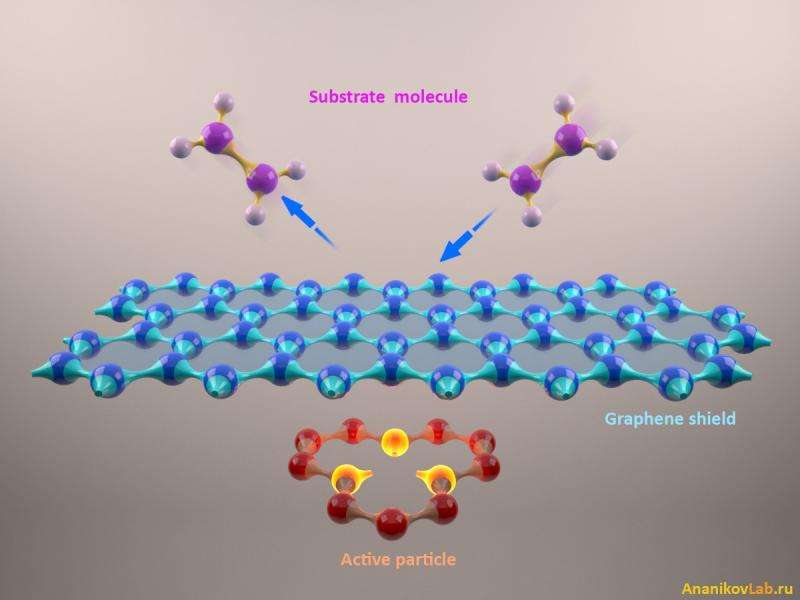A new study sheds light on a unique property of 2D materials – the ability to shield chemical interactions at the molecular level. Discovery of this shielding effect allows scientists to control the reactivity of molecules, tune the activity of catalysts, and construct a new generation of carbon materials
A new joint theoretical and experimental study suggests that graphene sheets efficiently shield chemical interactions. One of the promising applications of this phenomenon is associated with improving the quality of 2D materials by "de-charging" defect centers on the surfaces of carbon materials. Another important feature is the ability to control selectivity and activity of the supported metallic catalysts M/C on the carbon substrate.
Researchers studied carbon materials with defects on the surface—such defects represent an active species, which should be shielded. Indeed, the experiments demonstrated that the defect areas are quite reactive and retain high activity toward various molecules. However, as soon as the defects were covered with few layers of graphene flakes, the distribution of reactive centers became uniform (without localized reactivity centers typical for defect areas).
In other words, covering of the surface defects with graphene layers has decreased the influence of charged defects and rendered them "invisible" in terms of chemical interactions at the molecular level.
The article "Shielding the chemical reactivity using graphene layers for controlling the surface properties of carbon materials," was published in Physical Chemistry Chemical Physics journal (Royal Society of Chemistry).
More information: A. E. Sedykh et al. Shielding the chemical reactivity using graphene layers for controlling the surface properties of carbon materials, Phys. Chem. Chem. Phys. (2016). DOI: 10.1039/C5CP05586E
Journal information: Physical Chemistry Chemical Physics
Provided by Zelinsky Institute of Organic Chemistry
























